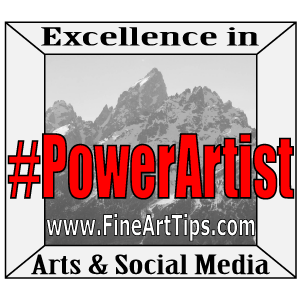My usual palette
This is my usual palette, for most of my watercolor paintings. I don't use all of the colors in every painting, and I sometimes use some colors that aren't on this list. For instance, I use viridian and manganese when I'm painting a tropical seascape, but not if I'm painting a snowy landscape. You might notice that there's no cool reds or yellows on my palette. I have several cool reds, like permanent rose, alizarin crimson, Quinacridone rose, etc., but I use them in very few of my paintings. I also have a few old tubes of cool yellows in my studio, but I can't remember the last time I squeezed any of them onto my palette.
Another thing you might notice, is that most of these colors are in the semi-opaque and non-staining range of pigments. I sometimes use some staining colors and some that are more transparent, but I like the ability to lift paint so I tend to stay with these colors most of the time. In my classes and workshops, I don't require that my students bring all of the exact same colors that I use. There are some colors that I just can't live without -- like indgo, payne's grey, and ultramarine, and my students that don't bring those colors to class will be lost! But other colors can be substituted with similar counterparts, like cadmium red for carmine, cerulean or cinerous for manganese, permanent green for chrome green, thalo green for viridian, or Quinacridone gold for ochre. Other colors can be mixed, such as using cobalt and alizarin to make violet, or indigo and ochre to make olive green. Actually, we do a lot of mixing in my classes. Indigo and sepia to create really dark greens in landscapes, violet and cobalt to create icy cold shadows, and a lot more.For oil painting, I use a split primary palette consisting of a warm and a cool version of each primary, plus titanium white. Depending on the subject, I add two or three additional colors to mix a wider variety of colors.
Most importantly, I recommend that my students only use professional quality paints and materials in my classes and workshops. Student quality paints and materials are more difficult to work with and will not produce paintings of the same high caliber.
I have new classes starting every month, both online and in my studio. Click on the "Calendar" link on the top of this page to see the full current listing.















